The Critical Role of Submerged Pumps in Water Treatment Systems
Submerged pumps play a pivotal role in modern water treatment systems, in industries dealing with complex and often abrasive processes like industrial flue gas desulfurization (FGD). These systems involve removing harmful substances, such as sulfur dioxide (SO₂), from exhaust gases emitted by power plants, chemical plants, and other industrial facilities. One of the most effective methods for doing so is by using slurries — mixtures of water and substances like limestone or sodium bicarbonate. The pump used to move these slurries through treatment systems must be engineered to withstand the challenges presented by both solid particles and highly corrosive environments.
The YTL Series Submerged Desulfurization Pump, a key player in this realm, is designed to handle exactly these challenges. By leveraging advanced engineering and incorporating the latest technologies, this pump offers a high-performance solution for a range of industrial applications, particularly those involved in wastewater treatment, flue gas desulfurization, and other slurry transport needs. To better understand why submerged pumps, particularly the YTL Series, are integral to such systems, it's necessary to explore the unique requirements of water treatment processes, the functionality of submerged pumps, and the technological innovations that make them so effective.
The Unique Challenges in Water Treatment and Desulfurization
Water treatment systems face a variety of challenges, especially when dealing with industrial waste and exhaust gases. Among the most significant challenges is the abrasiveness and corrosiveness of the materials being handled. Industrial wastewater and exhaust gases can contain various chemical contaminants, including sulfur compounds, heavy metals, and organic pollutants. These compounds often combine with solid particles, forming slurry mixtures that must be transported and treated effectively.
Flue gas desulfurization, for instance, involves the use of scrubbing processes where a slurry of alkaline substances, such as limestone or sodium hydroxide, is introduced into a scrubber tower. The slurry reacts with sulfur dioxide (SO₂) in the flue gas to form a solid byproduct, often calcium sulfate (CaSO₄), which must be removed. The slurry, which contains not only chemicals but also solid waste, is pumped through various stages of the treatment process, and this is where submerged pumps like the YTL Series come into play.
Submerged pumps must be capable of withstanding the following challenges:
Handling Abrasive Solids: The slurry mixtures contain fine solid particles, which can cause significant wear and tear on traditional pumps. These particles can erode the pump's internal components, including impellers, bearings, and seals.
Corrosive Environments: Industrial processes often involve the handling of acidic or alkaline fluids, making corrosion resistance an essential feature for any pump used in these systems.
High-Pressure and High-Flow Demands: Water treatment systems, particularly in large-scale industrial applications, often require pumps that can handle high flow rates and operate at elevated pressures for extended periods.
Energy Efficiency: Water treatment processes can be energy-intensive, and using inefficient pumps can significantly increase operational costs. Energy-efficient pumps that can maintain high performance while consuming less energy are therefore highly valued.
Minimal Maintenance: Given the continuous and demanding nature of industrial water treatment, the pump system must be designed to minimize downtime. Submerged pumps with maintenance-free or low-maintenance designs are crucial for ensuring reliable and cost-effective operation.
Submerged Pumps: The Technological Solution
Submerged pumps, such as the YTL Series, are specifically designed to overcome the challenges outlined above. By understanding the unique requirements of water treatment and desulfurization, engineers have developed submerged pumps with the right balance of durability, performance, and cost-effectiveness.
Robust and Durable Construction
Submerged pumps like the YTL Series are built to endure the harsh conditions present in water treatment systems. The pump's construction incorporates materials that are resistant to both abrasion and corrosion, ensuring that it performs well even in the most demanding environments. For instance, the YTL Series is designed with wear-resistant bearings and corrosion-resistant components to handle the aggressive slurries and acidic/alkaline fluids often encountered in desulfurization processes.
The pump’s impeller and pump body are designed for maximum durability. These components are usually made from high-strength alloys, resistant to corrosion and wear caused by solid particles. The materials are selected not only for their strength but also for their ability to resist corrosion from the chemical composition of industrial wastewater and exhaust gases.
Efficient Slurry Transport
The design of submerged pumps is specifically tailored to handle slurries, which are often challenging to pump due to their high viscosity and solid content. The YTL Series pumps are equipped with specialized impellers and optimally designed volutes that enhance the movement of slurry through the pump. These features reduce the likelihood of clogging or cavitation, two common issues encountered when pumping slurries.
The YTL Series' cantilever centrifugal pump design ensures efficient slurry transport, even at lower submersion depths (less than 1.5 meters). The long-shaft vertical submerged pumps are designed to provide greater versatility when handling deeper applications, such as in large-scale industrial scrubbers or desulfurization towers.
Reduced Maintenance with Advanced Engineering
One of the standout features of submerged pumps, particularly those in the YTL Series, is their low-maintenance design. For systems where pumps are frequently submerged and exposed to harsh conditions, reducing maintenance is crucial for ensuring continuous operation.
No Bearings or Seals in Submerged Section: The YTL Series, when submerged at depths less than 1.5 meters, operates with no bearings or seals in the submerged part of the pump. This eliminates common failure points, as seals are often prone to wear and need regular maintenance. This design significantly reduces the need for maintenance and increases pump reliability.
Wear-Resistant Sliding Bearings: For deeper submersion depths (greater than 1.5 meters), the pump features wear-resistant sliding bearings that are designed to withstand prolonged exposure to abrasive slurries without significant degradation. These bearings are lubricated and flushed by an external system, ensuring smooth operation and extending the service life of the pump.
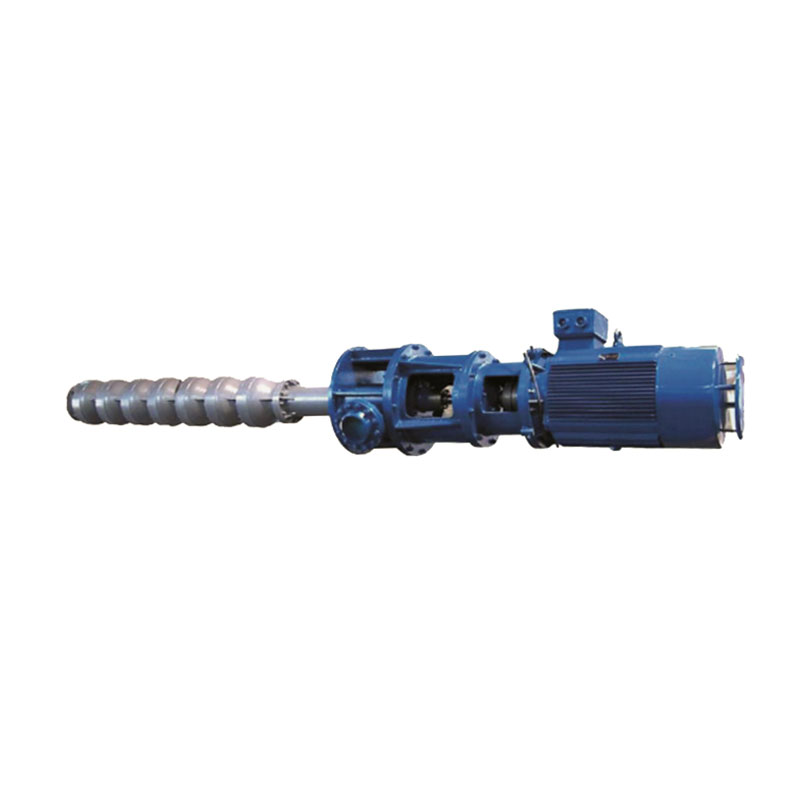
Energy Efficiency and Cost-Effectiveness
Energy consumption is a key consideration in industrial operations, especially when pumps are running continuously as part of water treatment processes. Submerged pumps like the YTL Series are designed for energy efficiency, with optimized impeller designs and hydrodynamic characteristics that reduce power consumption.
Efficient energy use not only cuts operational costs but also contributes to more sustainable practices. In addition, the durable construction and maintenance-free features help avoid costly repairs or downtime, providing further cost savings over the long term.
Versatility and Adaptability
The YTL Series submerged pumps come in two primary configurations, depending on the submerged length of the pump:
Cantilever Centrifugal Pump (Submerged Length < 1.5 meters): Ideal for shallow submersion applications, this design is simple yet highly effective. It is often used in smaller systems or those that require less submersion depth.
Vertical Long-Shaft Submerged Pump (Submerged Length > 1.5 meters): For deeper applications, such as large industrial scrubbers or desulfurization towers, this configuration offers the flexibility to handle higher submersion depths while maintaining optimal performance.
Key Features of Submerged Pumps
Submerged pumps are specialized pumps designed to operate in submerged conditions, offering solutions for industries that deal with challenging fluids, such as slurries, and environments where conventional pumps may not suffice. These pumps are primarily used in applications where the fluid being pumped is highly abrasive, chemically aggressive, or contains a significant solid content. In these environments, the reliability of the pump is critical, as it must withstand constant exposure to harsh operating conditions without frequent maintenance or failure.
Submerged pumps are most commonly used in wastewater treatment, chemical processing, and industrial applications like desulfurization, which involves the removal of sulfur compounds from exhaust gases in power plants and other industrial facilities.
Robust Design for Harsh Conditions
One of the standout features of submerged pumps is their robust design. The nature of the fluids they handle—slurries, wastewater, or chemically aggressive fluids—requires a pump capable of enduring harsh environmental conditions. The YTL Series submerged pump is designed with a particular focus on abrasion resistance and corrosion resistance, two key attributes that are essential when dealing with slurries containing solid particles and corrosive substances.
Abrasive Resistance
Slurries, particularly those encountered in industrial desulfurization processes, often contain a mixture of fine solids that can cause severe wear and tear on a pump. Over time, these solid particles erode pump components like impellers, bearings, and casing materials. The YTL Series is built with materials that are resistant to the abrasion caused by these particles, including high-strength alloys and wear-resistant coatings. This helps to ensure that the pump operates efficiently over long periods, even under the constant wear of moving abrasive materials.
Corrosion Resistance
Corrosion is another significant concern in applications that involve slurries with aggressive chemical compositions, such as sulfuric acid, alkaline chemicals, or other corrosive byproducts of industrial processes. The materials used in submerged pumps like the YTL Series are specifically chosen for their corrosion-resistant properties, helping to protect the pump from damage caused by exposure to these harmful chemicals. This includes the use of stainless steel, coated metals, and other materials that provide longevity and reliability even in highly acidic or alkaline environments.
High Solids Handling Capacity
The ability to handle slurries with high solid content is one of the defining features of submerged pumps. Unlike clear liquids, slurries can be difficult to manage due to their viscous nature and the presence of solids, which can clog or damage standard pumps. Submerged pumps, such as the YTL Series, are designed with features that help them effectively pump slurries, even those with solid contents up to 35%.
Impeller and Volute Design
The impeller design is critical in submerged pumps, as it directly affects how the pump handles slurry. The YTL Series features optimally engineered impellers that are specifically designed to minimize the risk of clogging and enhance the pump's ability to handle high solid content. These impellers are designed with a larger clearance between the blades and casing, allowing the pump to move solid particles more easily without the risk of blockages.
The volute (the part of the pump that directs the flow of the slurry) is also designed to handle slurries without losing efficiency. The design of the volute is optimized to ensure that the slurry flows smoothly and evenly through the pump, reducing the chances of clogging while maintaining high efficiency.
Self-Priming Capability
Another important feature for pumps handling slurries is the self-priming capability. Submerged pumps like the YTL Series are designed to be self-priming, which means they can start pumping slurry without the need for external assistance. This is particularly useful in applications where the slurry may have a high viscosity or a significant solid content, as it allows for faster and more efficient startup without worrying about air pockets or blockages.
High Durability and Long Service Life
Given that submerged pumps are often used in demanding industrial environments where they are expected to run continuously for extended periods, durability is a key feature. The YTL Series submerged pump is engineered for long service life, thanks to its sturdy construction and use of materials that can withstand long-term exposure to the abrasive and corrosive substances typically found in industrial processes.
Wear-Resistant Materials
The materials used in the construction of submerged pumps are selected not only for their resistance to corrosion but also for their wear-resistant properties. For example, the bearing system of the YTL Series is built using high-quality ceramic or alloy materials, which are less prone to wear caused by the constant circulation of abrasive solids in the slurry. This durability is critical in reducing maintenance requirements and prolonging the operational lifespan of the pump.
Minimized Downtime
Because submerged pumps like the YTL Series are built to be more durable than traditional pumps, they experience less frequent breakdowns, which minimizes the need for repairs and reduces system downtime. This is especially crucial in large-scale industrial systems where any downtime can lead to significant operational delays and financial losses. The long service life of submerged pumps thus translates directly into increased reliability and efficiency for industrial operations.
Energy Efficiency
In large industrial systems, energy consumption is a significant concern, and reducing energy costs is a priority for most operators. The YTL Series submerged pump is designed with energy efficiency in mind, ensuring that it can operate effectively while minimizing power usage. This is achieved through several factors:
Optimized Impeller Design: The impeller is engineered to move slurry with minimal energy input, using a design that maximizes fluid movement and reduces resistance.
Hydrodynamic Efficiency: The shape and size of the pump components, including the volute and casing, are optimized to ensure that energy is not wasted as the slurry moves through the system. This leads to a more efficient pumping process, lowering energy consumption and costs.
Submerged pumps like the YTL Series operate effectively in low flow rate applications, which further contributes to their energy efficiency. Their ability to operate efficiently at varying flow rates helps reduce the need for larger, more energy-intensive systems.
Minimal Maintenance Requirements
Submerged pumps are designed to operate with minimal maintenance, which is a key feature when considering their use in large industrial systems. One of the main challenges for traditional pumps in slurry applications is the wear and tear caused by the constant interaction with abrasive solids. For this reason, submerged pumps like the YTL Series are specifically engineered to reduce the need for regular maintenance.
Sealed, Self-Lubricating Bearings
The YTL Series features self-lubricating bearings that are designed to function without the need for external lubrication. This eliminates the need for frequent bearing replacements or lubrication maintenance, significantly reducing the overall maintenance workload.
No External Seals in Submerged Parts
The YTL Series, especially in its cantilever centrifugal pump configuration, does not have seals or bearings in the submerged section. This eliminates a major point of failure in traditional pumps, as seals are often the first components to wear out when exposed to abrasive or corrosive materials. By removing seals from the submerged part, the YTL Series pump achieves a maintenance-free operation in many configurations.
Corrosion and Chemical Resistance
As mentioned earlier, submerged pumps are often used in environments where they come into contact with highly corrosive fluids, such as sulfuric acid, alkaline chemicals, or other industrial byproducts. The YTL Series is built with materials that are corrosion-resistant, such as stainless steel and special coatings, that protect the pump components from the damage caused by these chemicals.
In addition to corrosion resistance, the YTL Series pump also offers chemical resistance, ensuring that the pump will not degrade when exposed to the chemicals commonly found in industrial desulfurization processes. This makes the YTL Series a perfect solution for applications in power plants, chemical facilities, and other industries where corrosive fluids are regularly handled.
Versatility in Application
The versatility of submerged pumps is another critical feature, as they can be used in a wide variety of applications beyond just desulfurization. While the YTL Series is designed specifically for slurry applications, it is also adaptable to other demanding pumping requirements, such as:
Wastewater Treatment: Submerged pumps are used to transport wastewater that contains solid waste or other contaminants.
Chemical Processing: In industries where chemicals are handled, submerged pumps are used to move aggressive chemicals without the risk of damage to the pump.
Mining and Mineral Processing: In mining, submerged pumps are used to transport mineral slurries that contain a mix of solids and liquids.
The YTL Series submerged pump’s design allows it to adapt to these varied applications, ensuring reliable operation in a wide range of industries.
Pump Structure for Different Submersion Depths
The design and structure of submerged pumps are highly dependent on the submersion depth—a critical factor that determines the type of pump configuration used. In applications where the pump operates underwater or below the surface, the submerged portion must be engineered with attention to the challenges associated with long-term operation in submerged conditions. These challenges include maintaining reliability, preventing wear and tear, and minimizing maintenance requirements in harsh industrial environments.
The YTL Series Submerged Pump is designed to address these challenges by offering two distinct configurations based on the submersion depth: the Cantilever Centrifugal Pump (for submersion depths less than 1.5 meters) and the Vertical Long-Shaft Submerged Pump (for submersion depths greater than 1.5 meters). Each configuration is tailored to provide the most effective solution for specific operational needs, ensuring that the pump can operate efficiently and reliably in both shallow and deep submersion scenarios.
Cantilever Centrifugal Pump (Submerged Length < 1.5m)
For applications where the submerged length of the pump is less than 1.5 meters, the Cantilever Centrifugal Pump configuration is ideal. This design is especially suited for situations where the pump is placed in relatively shallow conditions and does not require a complex internal bearing and sealing system in the submerged section. The YTL Series pump in this configuration is optimized for reliable performance in low-depth slurry transport tasks, where the primary challenge lies in the efficient movement of slurry without compromising on maintenance or durability.
Design Features
No Bearings or Seals in the Submerged Section: One of the most notable features of the cantilever centrifugal pump design is the lack of bearings or seals in the submerged portion of the pump. This design eliminates the need for traditional mechanical seals, which are often vulnerable to wear and damage when exposed to abrasive materials or corrosive environments. By removing seals from the submerged section, the YTL Series pump minimizes the risk of leakage, reducing maintenance and improving long-term performance.
Simplified Structure: The cantilever centrifugal pump is made up of a streamlined set of essential components, including the pump body, impeller, pump cover, support pipe, pump frame, and shaft. This straightforward structure makes the pump easier to manufacture, operate, and maintain. With fewer parts subject to wear, the pump operates with less friction, resulting in higher efficiency and reduced energy consumption.
Maintenance-Free Operation: Because there are no bearings or seals submerged in the slurry, the need for regular maintenance is drastically reduced. This makes the YTL Series cantilever centrifugal pump well-suited for continuous, long-term operation in industrial applications. With fewer maintenance intervals, operators can rely on this configuration for extended periods without the usual downtime or repair costs associated with pumps that require regular bearing and seal maintenance.
Reliable Performance in Shallow Applications: This design is optimized for shallow applications, making it a perfect choice for slurry transport systems where the pump’s submerged depth is relatively shallow (less than 1.5 meters). Whether the slurry is used in industrial desulfurization processes, wastewater treatment, or other similar applications, the cantilever centrifugal pump efficiently moves the slurry while minimizing potential issues associated with deeper submersion.
Applications and Use Cases
The cantilever centrifugal pump configuration is ideal for medium to low depth slurry transport, where the pump does not need to be submerged deeper than 1.5 meters. Key applications include:
Desulfurization Systems in Smaller Industrial Plants: Smaller or medium-sized power plants that need to process less-intensive flue gas may benefit from this configuration.
Chemical Processing: Facilities that handle less aggressive slurry mixtures or those requiring efficient, shallow submersion of the pump.
Agriculture and Irrigation Systems: For handling slurry-based irrigation systems where the depth of submersion is minimal.
Vertical Long-Shaft Submerged Pump (Submerged Length > 1.5m)
In applications where the pump needs to be submerged deeper than 1.5 meters, the Vertical Long-Shaft Submerged Pump configuration becomes necessary. This design is more robust and features advanced engineering to handle the added complexities of deeper submersion. With the added pressure and depth, this configuration requires the use of specialized components to ensure smooth and continuous operation.
Design Features
Wear-Resistant and Corrosion-Resistant Sliding Bearings: As the submerged depth increases, so does the need for durable, long-lasting materials. The YTL Series Vertical Long-Shaft Submerged Pump includes sliding bearings in the submerged section that are both wear-resistant and corrosion-resistant. These bearings are specially engineered to withstand the constant friction caused by slurry particles and the chemical properties of the fluids being pumped. The wear-resistant bearings ensure that the pump continues to operate efficiently even in aggressive, high-abrasion environments.
External Flushing Device for Bearing Protection: To further enhance the durability and longevity of the bearings, the vertical long-shaft submerged pump requires an external flushing device. This system ensures that the bearings are continually flushed with clean fluid, preventing the buildup of abrasive materials and reducing the risk of premature bearing wear. The external flushing also helps in cooling the bearings, which is critical when the pump operates at greater depths, where additional heat and friction could otherwise damage the bearings.
Comprehensive Component Structure: The YTL Series Vertical Long-Shaft Submerged Pump consists of several key components, including the pump body, impeller, pump cover, lower and middle wear-resistant sliding bearings, support pipe, pump frame, and shaft. Each component is carefully designed to withstand the higher stresses encountered during deeper submersion. The pump's structure ensures that it operates efficiently and reliably, even in harsh and demanding conditions.
Durability and Robustness for Deeper Applications
As the pump is submerged deeper, the forces acting on its components increase. The vertical long-shaft design allows for the necessary structural integrity to handle these pressures while maintaining performance. The YTL Series vertical submerged pump is built to handle the added stress of deep submersion, providing the following benefits:
Increased Pressure Tolerance: Deeper submerged pumps are often subjected to higher pressure and strain, which can lead to premature failure if not properly designed. The YTL Series vertical pump is engineered with reinforced materials that allow it to withstand the increased pressure without sacrificing performance.
Consistent Slurry Flow: The longer shaft and vertical design ensure that the pump can maintain consistent slurry flow, even at greater depths. The pump is capable of handling large volumes of slurry without clogging or losing efficiency.
Applications and Use Cases
The vertical long-shaft submerged pump configuration is ideal for deeper applications requiring greater submersion and durability. Common uses include:
Large-Scale Industrial Desulfurization: In power plants with large desulfurization systems, where deep submersion is necessary for effective slurry circulation.
Wastewater Treatment Plants: Facilities dealing with large volumes of wastewater that require deep submersion for effective mixing and transport.
Mining Operations: In mining applications where slurry must be pumped from deep underground or in large-scale mineral processing systems.
|
Feature |
Cantilever Centrifugal Pump (Submerged Length < 1.5m) |
Vertical Long-Shaft Submerged Pump (Submerged Length > 1.5m) |
|
Design |
Simple, no bearings or seals in the submerged section |
Complex, includes wear-resistant bearings and external flushing system |
|
Submersion Depth |
Shallow submersion (<1.5 meters) |
Deeper submersion (>1.5 meters) |
|
Maintenance |
Maintenance-free, minimal wear due to lack of submerged bearings and seals |
Requires external flushing system for bearing protection and maintenance |
|
Durability |
Reliable in shallow applications, not suitable for deep submersion |
Highly durable, designed for demanding, deep submersion conditions |
|
Applications |
Small to medium-scale desulfurization, chemical processing, agriculture |
Large-scale industrial desulfurization, mining, large wastewater treatment plants |
Applications in Water Treatment
Flue Gas Desulfurization (FGD) Systems
In flue gas desulfurization (FGD) systems, submerged pumps like the YTL Series are critical in removing sulfur compounds from the exhaust gases of industrial power plants. The process typically involves pumping a lime slurry or a gypsum-based solution through large scrubbers to neutralize the sulfur dioxide (SO2) in the gas stream. This slurry, which contains solid particles suspended in liquid, must be moved efficiently without clogging the system or causing damage to the pump components.
Role of Submerged Pumps in FGD:
Slurry Transport: The primary function of submerged pumps in FGD systems is to transport the slurry mixture from the preparation tanks to the scrubbers and back. Given the solid content of the slurry, these pumps must be capable of handling abrasive particles without compromising efficiency. The YTL Series Submerged Pumps are designed with specialized abrasion-resistant impellers and corrosion-resistant materials, allowing them to operate in the harsh, high-abrasion environment typically found in desulfurization processes.
Corrosion Resistance: FGD systems often use calcium hydroxide or lime solutions that are highly alkaline. The YTL Series submerged pumps are made from corrosion-resistant materials such as stainless steel and special coatings, ensuring long-term performance even in environments with high pH levels.
Low Maintenance Requirements: The maintenance-free operation of the submerged pump is a crucial benefit, particularly in FGD systems that require continuous operation. By eliminating the need for seals and bearings in the submerged section, these pumps can work for extended periods without frequent maintenance, reducing downtime and operational costs.
Wastewater Treatment Plants
In wastewater treatment plants (WWTPs), submerged pumps are essential for moving liquids and slurries that contain a mix of solid waste, organic matter, and often hazardous chemicals. These plants treat municipal, industrial, and sometimes agricultural waste, all of which present unique challenges in terms of handling both solids and liquids in an efficient and environmentally responsible manner.
Role of Submerged Pumps in WWTPs:
Sludge Handling: During the treatment process, solids in the wastewater are separated and condensed into a thick slurry known as sludge. Submerged pumps are used to transfer this sludge to various treatment stages, including digestion, dewatering, and disposal. The high solid content of the sludge can be abrasive and corrosive, requiring a pump that can resist both wear and damage from constant exposure to these harsh conditions. The YTL Series Submerged Pump is specifically designed to handle high-solid slurries without clogging, ensuring smooth and continuous operation.
Chemical Resistance: Wastewater treatment often involves the use of various chemicals like chlorine, sulfuric acid, or phosphoric acid to disinfect, adjust pH levels, or treat contaminants. Submerged pumps must therefore be capable of withstanding exposure to these aggressive chemicals. The corrosion-resistant features of the YTL Series ensure that the pump components, including bearings and impellers, are protected from chemical damage.
Energy Efficiency: In large-scale wastewater treatment facilities, energy consumption is a significant concern. The YTL Series pumps are engineered to operate with low energy consumption, making them a cost-effective choice for treating large volumes of wastewater. The energy-efficient impeller design helps reduce power requirements, which is critical when dealing with large, ongoing pumping operations in wastewater treatment plants.
Stormwater Management
Submerged pumps are also used in stormwater management systems, where they help control and treat runoff water during heavy rainfall events. Stormwater, which often contains debris, contaminants, and organic matter, must be transported efficiently to sedimentation tanks or treatment ponds for filtration and treatment.
Role of Submerged Pumps in Stormwater Management:
Handling Debris and Solids: Stormwater runoff can contain various types of debris, including leaves, plastic, and dirt. Submerged pumps must be capable of transporting water mixed with these solids without clogging. The YTL Series submerged pumps are designed to handle a wide range of solids, ensuring that the stormwater management system can function smoothly even during peak flow events.
Adaptability: Submerged pumps used in stormwater systems must be versatile and capable of handling different flow rates depending on the severity of the storm. The YTL Series pumps are capable of operating effectively across a wide range of flow conditions, making them suitable for stormwater systems that experience variable demands.
Corrosion and Chemical Resistance: Stormwater runoff can sometimes contain chemicals from industrial or agricultural activities, such as pesticides, fertilizers, or oils. These contaminants can be highly corrosive, so pumps in stormwater systems need to be resistant to these chemicals. The corrosion-resistant properties of the YTL Series Submerged Pumps make them ideal for this application, ensuring durability even when exposed to a variety of harmful substances.
Industrial Water Treatment Systems
Industrial water treatment systems, which serve industries like mining, oil and gas, and chemical processing, often involve handling highly aggressive fluids or slurries. These systems require reliable pumps that can handle abrasive slurries, high-temperature fluids, or corrosive chemicals, often under extreme pressure.
Role of Submerged Pumps in Industrial Water Treatment:
Mining and Mineral Processing: In the mining industry, submerged pumps are used to move slurry containing valuable minerals mixed with water and other materials. These slurries can be highly abrasive, so submerged pumps must be designed to withstand constant wear. The YTL Series submerged pumps are built with wear-resistant materials and are able to operate efficiently in such demanding environments.
Oil and Gas: The oil and gas industry uses submerged pumps in systems that treat produced water—water brought up during the extraction of oil or gas. This produced water often contains high levels of salt, oil, and other chemicals, making it a challenging fluid to pump. The corrosion-resistant design of the YTL Series ensures that the pumps will remain operational even when exposed to the harsh conditions commonly found in oil and gas treatment facilities.
Chemical Processing: In chemical processing plants, submerged pumps are required to handle a wide variety of chemicals, some of which are corrosive, toxic, or reactive. The YTL Series submerged pumps, with their robust construction and chemical-resistant capabilities, are ideal for ensuring that these challenging fluids can be transported safely and efficiently.
Sludge Treatment and Dewatering
In both industrial and municipal water treatment, the process of sludge dewatering is essential to reduce the volume of waste and prepare it for disposal or further treatment. Submerged pumps are often used in dewatering systems to transport thick sludge or biological sludge into centrifuges, filters, or drying beds.
Role of Submerged Pumps in Sludge Dewatering:
High-Solid Content Slurry: The dewatering process often involves handling slurry with a high concentration of solids, which can quickly clog conventional pumps. Submerged pumps, such as the YTL Series, are specifically designed to transport these high-solid slurries without clogging, ensuring smooth operation and preventing costly downtime.
Durability and Low Maintenance: Given the continuous nature of dewatering operations, pumps in these systems must be durable and require minimal maintenance. The maintenance-free design of the YTL Series submerged pump, along with its wear-resistant and corrosion-resistant properties, makes it an ideal solution for the harsh conditions of dewatering systems.
Efficient Sludge Transport: The ability to transport thick sludge efficiently is key to optimizing dewatering operations. The YTL Series submerged pump's ability to handle slurry with high solid content ensures that sludge is transported efficiently, helping to reduce treatment time and improve overall plant performance.
Biogas and Anaerobic Digestion
Anaerobic digestion processes are used in wastewater treatment plants and certain industrial applications to break down organic waste into biogas (primarily methane) and digestate. These processes require specialized pumps that can handle organic slurries in anaerobic conditions.
Role of Submerged Pumps in Anaerobic Digestion:
Slurry Transport: Submerged pumps in anaerobic digestion systems are used to transport the organic waste slurry into the digester tanks, where the microbial breakdown process occurs. The high solids content of the organic waste and the corrosive nature of biogas require pumps like the YTL Series that are built to last in such environments.
Corrosion Resistance: The biogas produced in anaerobic digestion can be highly corrosive, requiring corrosion-resistant pumps to ensure long-term reliability. The YTL Series submerged pumps are equipped with materials that can withstand the corrosive properties of the biogas, ensuring that the system operates efficiently over time.
Advantages of Submerged Pumps
Durability and Corrosion Resistance
One of the most significant advantages of submerged pumps is their ability to withstand harsh operating conditions, which makes them invaluable in industries like flue gas desulfurization, wastewater treatment, and mining. The continuous exposure to abrasive solids, chemically aggressive liquids, and extreme temperatures demands pumps made from highly durable materials.
High-Quality Materials for Longevity
Submerged pumps in the YTL Series are designed using high-quality materials, including wear-resistant alloys and corrosion-resistant coatings, ensuring they operate effectively even in the most demanding environments. These pumps are often exposed to abrasive slurries, which can erode traditional pump components quickly. With materials engineered for abrasion resistance, the YTL Series pumps feature impellers, bearings, and shaft components that are built to withstand constant wear without significant degradation over time.
Corrosion Resistance for Harsh Environments
In addition to abrasion, submerged pumps are often subjected to corrosive substances, such as acidic slurries in desulfurization systems, saline water in oil and gas extraction, and chemical waste in industrial wastewater treatment. The corrosion-resistant properties of the YTL Series pumps, which are designed with materials like stainless steel and special coatings, ensure the components can withstand chemical exposure. Whether handling highly alkaline fluids or aggressive chemicals, the pump remains operational and does not suffer premature corrosion that could result in pump failure or costly repairs.
Continuous Operation in Extreme Conditions
Submerged pumps are often required to operate in submerged conditions, where the components are constantly exposed to the slurry or fluid they pump. Unlike conventional pumps that might suffer wear when exposed to abrasive solids or corrosive substances, submerged pumps like the YTL Series are engineered for continuous, reliable operation under such conditions. The design and materials ensure that these pumps can handle the pressures and stresses of long-term, heavy-duty usage without sacrificing performance.
Maintenance-Free Operation
One of the standout advantages of submerged pumps, particularly the cantilever centrifugal pumps within the YTL Series, is their maintenance-free design—a feature that sets them apart from traditional pumping systems. Submerged pumps that operate in shallow applications (with a submerged length of less than 1.5 meters) can be designed without the need for internal bearings or seals in the submerged portion of the pump.
Elimination of Bearings and Seals
The lack of bearings or seals in the submerged part of the pump eliminates one of the most common causes of failure in conventional pumps. Bearings and seals, which are critical for maintaining the pump's performance, are often exposed to the harsh slurry, causing wear and tear over time. Submerged pumps in shallow applications, like the YTL Series, bypass these components in the submerged portion, significantly reducing the need for maintenance. This design enhances reliability and minimizes the chance of failure, especially in high-volume, continuous-duty operations where maintenance would otherwise be frequent and costly.
Reduced Downtime
The maintenance-free nature of the submerged pump reduces downtime, a critical factor in industries that rely on continuous, round-the-clock operations. Frequent downtime for maintenance—such as replacing bearings, seals, or other worn components—can lead to significant production losses and increase operational costs. By eliminating the need for these components in the submerged section, submerged pumps offer greater uptime, improving the efficiency of the system as a whole. This results in cost savings over time due to fewer service interruptions and lower maintenance expenditures.
Reliability in Continuous Operation
In industrial applications where pumps are expected to run 24/7, like those found in water treatment plants and flue gas desulfurization systems, a maintenance-free design is invaluable. By minimizing the need for constant attention, submerged pumps allow operators to focus on more important aspects of the system, increasing operational efficiency and lowering the overall cost of ownership.
Efficient Slurry Handling
One of the core advantages of submerged pumps is their ability to handle high-solid content slurries—a critical feature for industries involved in mineral processing, wastewater treatment, and desulfurization processes. Handling slurries, which often contain a mix of solid particles, chemicals, and abrasive materials, presents significant challenges for conventional pumps. Submerged pumps are specifically designed to deal with these types of fluids effectively.
Design for High-Solid Content
Submerged pumps like the YTL Series are built with heavy-duty impellers, reinforced shafts, and abrasion-resistant materials that allow them to handle slurries with high solid content without losing efficiency or clogging. This makes them ideal for applications where the slurry can contain up to 35% solids, as seen in industrial desulfurization systems, where gypsum slurry and lime slurry must be continuously pumped through large scrubbers and filtration systems.
Preventing Clogging and Wear
The impeller design of submerged pumps ensures that the slurry is effectively moved without causing clogging or excessive wear to the internal components. The slurry handling capabilities of the YTL Series ensure that the pump can maintain a steady flow rate and consistent pressure, even in systems where the slurry is especially thick or abrasive. This enhanced slurry handling capacity is critical for minimizing interruptions in industrial processes and maintaining consistent performance over time.
Handling Abrasive Materials
Submerged pumps must also contend with abrasive materials within the slurry. Whether it’s solid particles, minerals, or crystalline substances, these materials can quickly wear down traditional pumps, leading to loss of efficiency and premature failure. The wear-resistant materials used in submerged pumps—such as hard alloys or ceramic coatings—are designed to withstand the abrasive forces exerted by the slurry, enabling the pump to maintain its efficiency for longer periods.
Versatility in Configuration
Submerged pumps offer exceptional versatility due to their ability to be configured in different designs based on the operational requirements of a given system. The YTL Series submerged pumps are available in two distinct configurations: the Cantilever Centrifugal Pump for shallow applications and the Vertical Long-Shaft Submerged Pump for deeper submersion depths. This flexibility allows submerged pumps to be tailored for different types of water treatment systems, ensuring that the right solution is always available for specific needs.
Cantilever Centrifugal Pump (Submerged Length < 1.5 meters)
The Cantilever Centrifugal Pump configuration is ideal for shallow submersion applications, where the pump is used in relatively shallow systems (less than 1.5 meters submerged). This design offers several benefits, including:
No bearings or seals in the submerged portion, reducing maintenance and increasing reliability.
Simple and compact design for easy integration into smaller systems.
Ideal for low to medium-solid-content slurry transport, making it well-suited for applications like chemical processing and small-scale desulfurization.
Vertical Long-Shaft Submerged Pump (Submerged Length > 1.5 meters)
For deeper applications, where the pump is submerged deeper than 1.5 meters, the Vertical Long-Shaft Submerged Pump is used. This configuration offers:
Enhanced durability and longer operational lifespan due to its reinforced shaft and wear-resistant components.
External flushing systems for bearing protection and reduced wear in deep submersion environments.
Adaptability for large-scale industrial applications, such as large-scale desulfurization or mining slurry transport, where high flow rates and deeper submersion are required.


 English
English русский
русский عربى
عربى

.jpg)
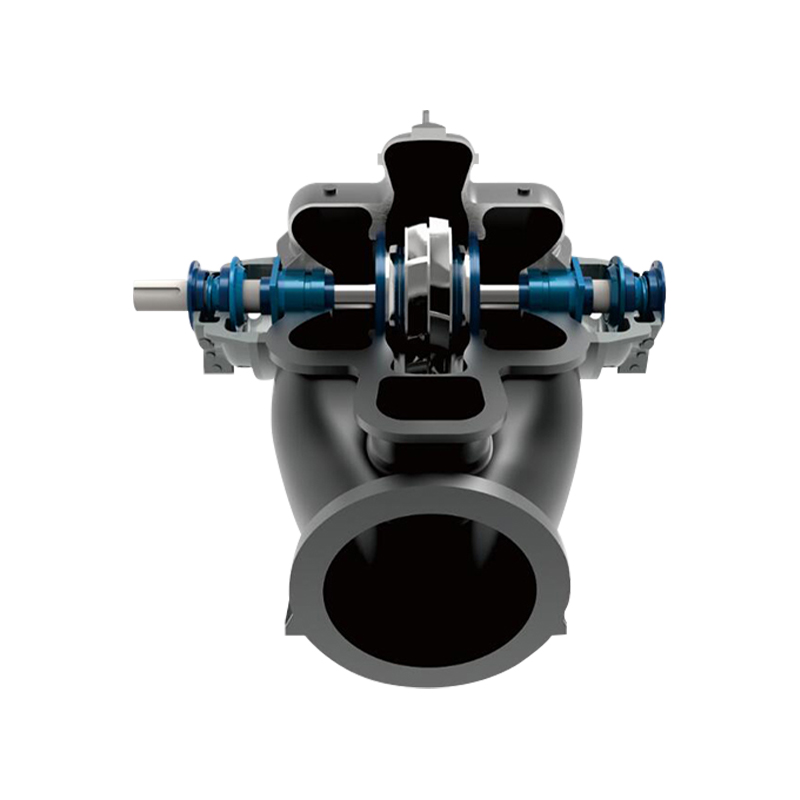
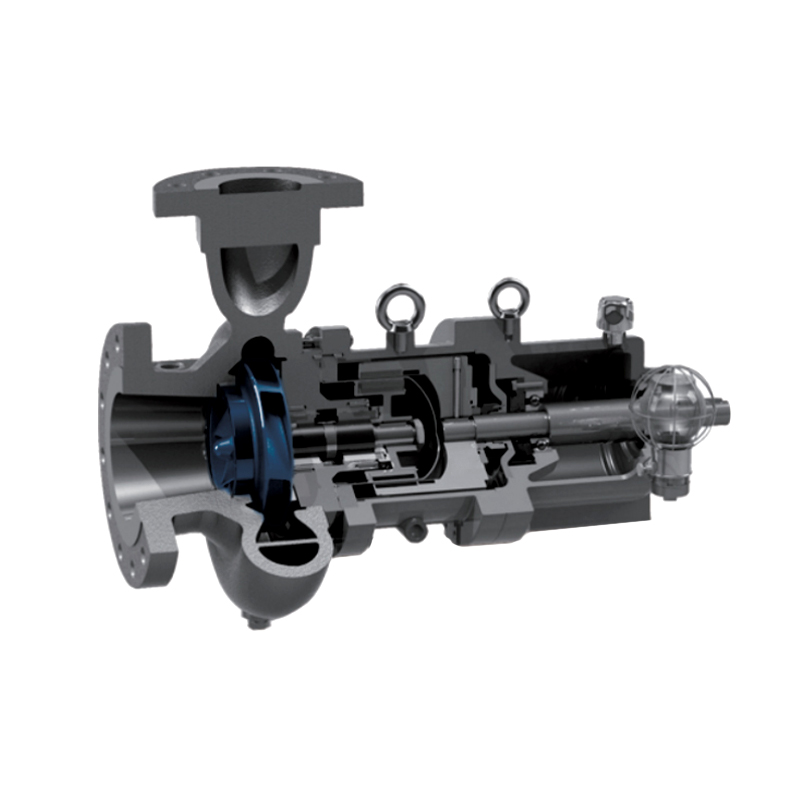

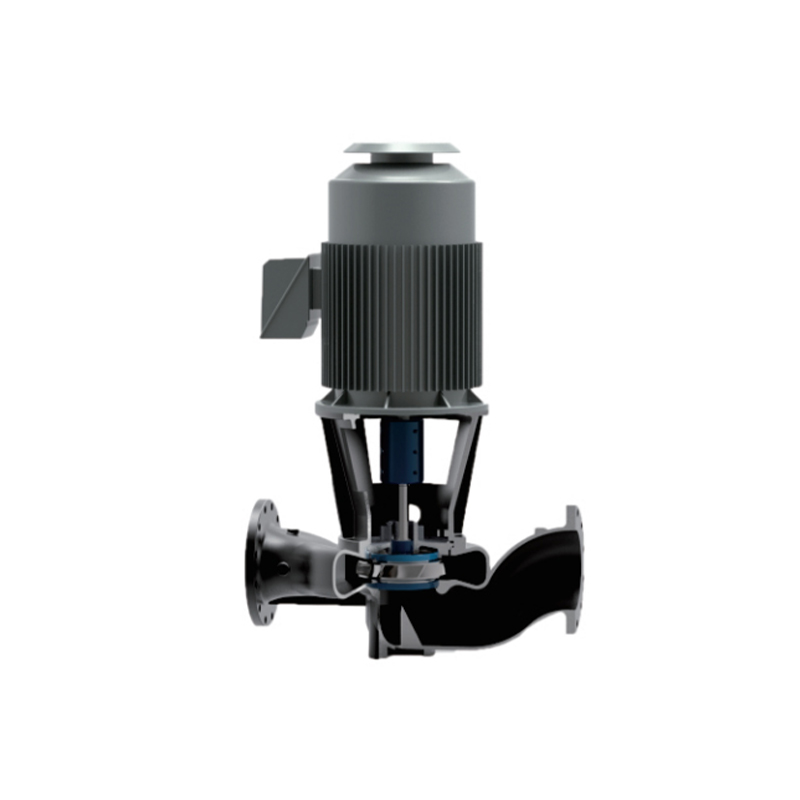

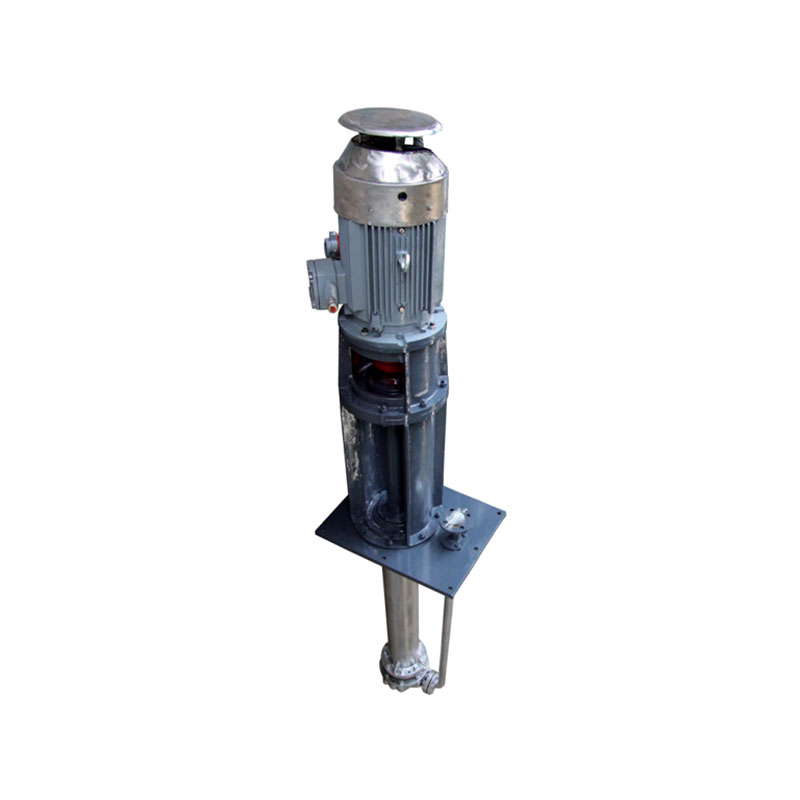
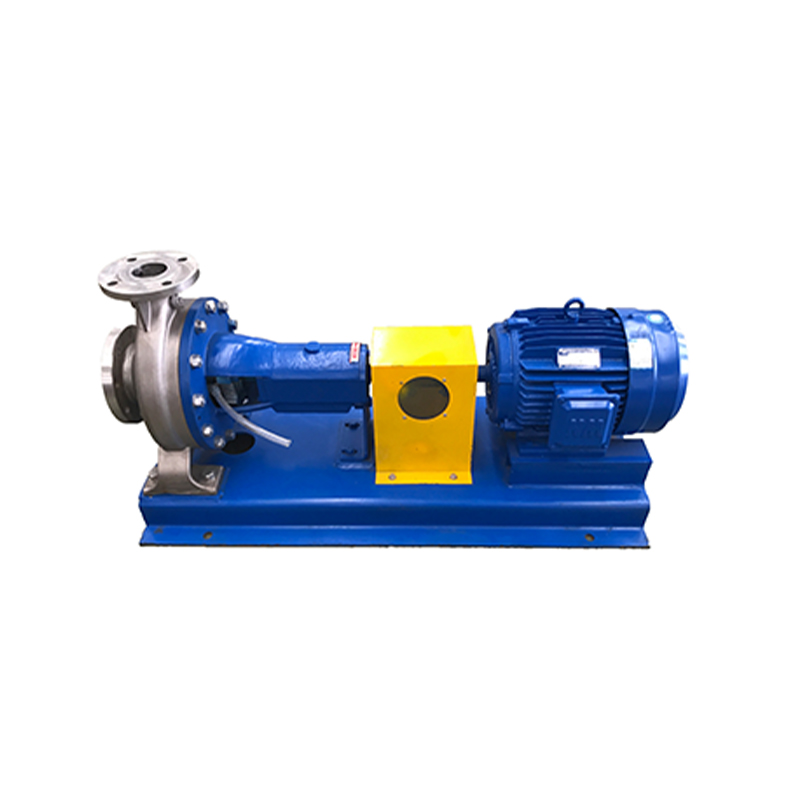

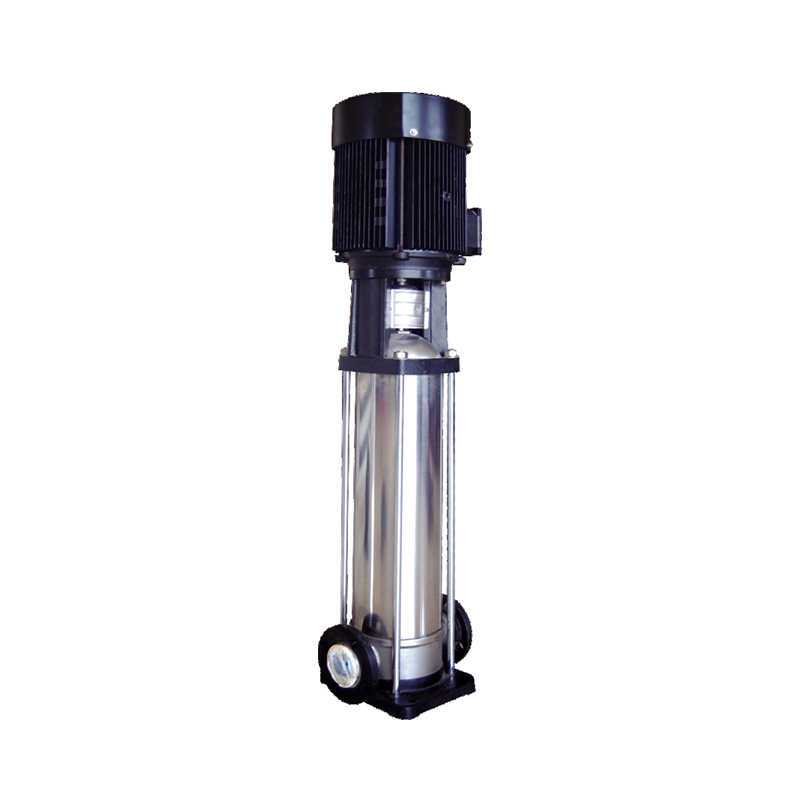






 ENG
ENG

 TOP
TOP